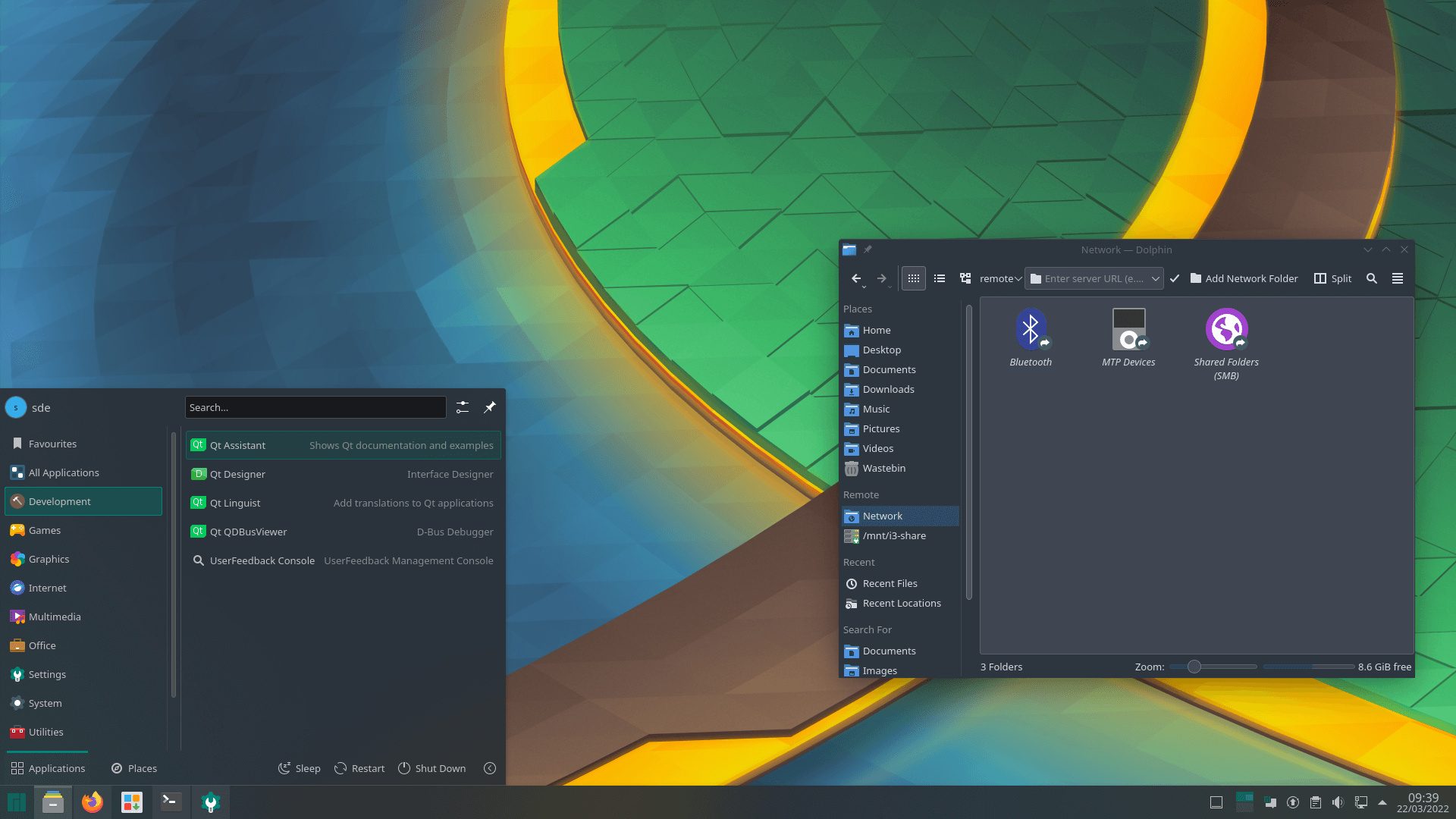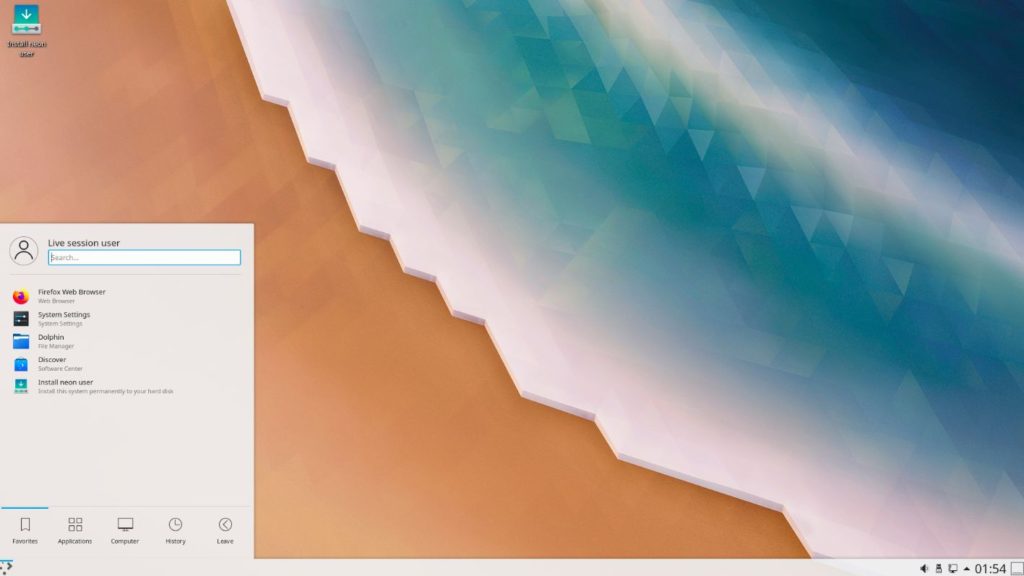Kde Neon vs. Kubuntu: The Quest for the Ultimate KDE Experience

KDE Neon and Kubuntu are two prominent and popular Linux distributions that offer the KDE Plasma desktop environment. Both distributions provide a highly customizable and user-friendly computing experience, but they differ in their focus and target audience. This article delves into the distinctive characteristics and strengths of each distribution to guide users in choosing the optimal choice for their needs and preferences.

KDE Neon: A Pure and Unstable KDE Experience for Cutting-Edge Users

KDE Neon distinguishes itself as a pure and uncompromising distribution focused solely on showcasing the latest advancements of the KDE Plasma desktop. It serves as a testing ground for the latest KDE technologies, offering a bleeding-edge experience for users. To achieve this, KDE Neon maintains a rolling release model, continually updating its software components as they evolve. This approach ensures access to the freshest features and improvements but may introduce some instability and bugs. KDE Neon is ideally suited for technically proficient users who appreciate the bleeding-edge innovation and are willing to handle potential issues.
Kubuntu: Polished KDE Stability for Average and Advanced Users
In contrast, Kubuntu prioritizes stability and a refined user experience for a wider audience. Unlike KDE Neon, Kubuntu employs a long-term support (LTS) release model, ensuring stability and compatibility with hardware and software for a more extended period. This stability-first approach introduces a trade-off in terms of cutting-edge features, as Kubuntu receives major KDE updates on a less frequent basis. However, for most users, including enthusiasts, advanced users, and average users, the balance of stability and functionality in Kubuntu is often preferable.
Core Differences: LTS vs. Rolling Release
The fundamental distinction between KDE Neon and Kubuntu lies in their release models. KDE Neon follows a rolling release model, whereby updates are continuously integrated into the distribution. This approach prioritizes access to the latest KDE updates but may introduce instability. Conversely, Kubuntu adheres to an LTS release model, releasing major updates every two years. While this provides stability and long-term support, it may result in a less cutting-edge KDE experience.
Target Audience: Power Users vs. General Users
KDE Neon specifically targets KDE enthusiasts and power users seeking an unadulterated KDE experience. Its rolling release model and bleeding-edge focus suit users comfortable with handling potential instability and eager to explore the latest KDE innovations. Kubuntu, on the other hand, caters to a broader user base, encompassing average users and advanced users. Its LTS release model and emphasis on stability make it a more reliable and user-friendly choice for those prioritizing productivity and stability over bleeding-edge features.
Conclusion
The choice between KDE Neon and Kubuntu ultimately depends on individual preferences and requirements. KDE Neon’s pure and cutting-edge KDE experience will appeal to users seeking the latest and greatest KDE has to offer, while Kubuntu’s polished stability and wider user focus make it the preferred choice for those seeking a more refined and well-rounded KDE experience. By understanding their distinctions and target audiences, users can make an informed decision and select the distribution that best aligns with their needs and preferences.## Kde Neon Vs. Kubuntu: The Quest For The Ultimate Kde Experience
Executive Summary
KDE Neon‘s focus on bleeding-edge software and ultimate KDE experience, while Kubuntu‘s balance of stability and innovation, make them compelling choices for KDE enthusiasts. Ultimately, the choice depends on individual preferences and willingness to embrace experimental features.
Introduction
KDE, a powerful and customizable desktop environment, offers two primary distributions: KDE Neon and Kubuntu. Both provide a seamless KDE experience, but with distinct characteristics that cater to different user needs. This comprehensive analysis delves into the intricacies of each, exploring their strengths and weaknesses to guide you towards the optimal choice for your computing journey.
KDE Neon
Unleash the Bleeding Edge: KDE Neon stands as a sanctuary for KDE zealots, offering a rolling release model that grants instant access to the latest KDE Plasma and application updates. Embracing the cutting-edge spirit, KDE Neon represents the pinnacle of KDE innovation, constantly pushing the boundaries of user experience.
- Swift Updates: Continuous updates ensure uninterrupted access to the latest features and security patches, keeping your system at the forefront of technological advancements.
- Direct from the Source: KDE Neon draws its updates directly from KDE’s repositories, providing a direct connection to the developers’ vision for the future of KDE.
- Testing Ground: As a testing platform for upcoming KDE releases, KDE Neon empowers users to actively contribute to the shaping of KDE’s future while immersing themselves in the latest innovations.
Kubuntu
Stability Meets Innovation: Kubuntu strikes a harmonious balance between stability and innovation, appealing to users who prioritize a stable and reliable system without compromising access to KDE’s modern advancements.
- Backed by Ubuntu: Rooted in the stability of Ubuntu’s LTS (Long Term Support) releases, Kubuntu offers extended support cycles, ensuring a consistent and dependable computing experience over multiple years.
- KDE on Stable Ground: Kubuntu incorporates stable versions of KDE Plasma and applications, offering a refined and polished desktop environment with minimal disruptions.
- Community Involvement: An active and dedicated community supports Kubuntu, providing extensive documentation, support forums, and a welcoming environment for users to connect and share knowledge.
Feature Comparison
Under the Microscope: A thorough examination of key features reveals the subtle differences between KDE Neon and Kubuntu.
- Package Management: KDE Neon employs the bleeding-edge APT package manager with access to KDE’s Backports PPA, while Kubuntu utilizes the more conservative APT package manager with stable Ubuntu repositories.
- Release Cadence: KDE Neon follows a rolling release model with frequent updates, while Kubuntu adheres to a fixed release schedule with periodic major version releases supported by security updates.
- Target Audience: KDE Neon caters to advanced users and enthusiasts seeking the utmost cutting-edge experience, while Kubuntu appeals to a broader audience seeking a stable and user-friendly KDE desktop.
- Software Ecosystem: Both distributions offer access to KDE’s extensive software ecosystem, including productivity suites, multimedia tools, and development environments.
- Customizability: Both KDE Neon and Kubuntu empower users to tailor their desktop experience extensively, with access to themes, widgets, and a comprehensive set of configuration options.
- Community Support: KDE Neon and Kubuntu boast thriving communities offering an array of support resources, including documentation, forums, and active user involvement.
Conclusion
Navigating the choice between KDE Neon and Kubuntu ultimately depends on individual preferences and computing goals. If embracing bleeding-edge software, actively contributing to KDE’s evolution, and experiencing the latest KDE innovations are paramount, KDE Neon emerges as the ideal choice. Conversely, if stability, a reliable long-term computing experience, and accessing a thoroughly tested KDE environment are prioritized, Kubuntu shines as the optimal selection.
Keyword Phrase Tags
- KDE Neon vs. Kubuntu
- KDE Plasma Desktop
- Cutting Edge Software
- Stability and Innovation
- Customizability and User Experience

It is very impressive how theNeon handles the desktop layout, and I think that the application menu should take some lessons from it.
Kubuntu is a peice of crap and Neon is better. Neon handles the desktop great while Kubuntu is bad.
It’s interesting to see the different approaches that Kubuntu and Neon take to the KDE experience. Kubuntu seems to focus on stability and ease of use, while Neon seems to be more focused on customization and cutting-edge features.
I tried both Neon and Kubuntu, and I didn’t like either of them. I think KDE is just a bad desktop environment.
The fact that Kubuntu is based on Ubuntu is a major advantage for it. Ubuntu has a much larger community and more support than Neon.
I love the look and feel of KDE Neon. It’s so clean and modern. I think it’s the best KDE experience out there.
Oh, wow, another KDE distro. Just what we needed.
I think that the comparison between Kubuntu and Neon is a bit unfair. Kubuntu is a more mainstream distro, while Neon is more of a niche distro. You can’t really compare the two.
I tried to install Neon, but it broke my computer. I guess I’ll stick with Kubuntu.
I’ve been using Neon for a few months now, and I’m really happy with it. It’s fast, stable, and customizable. I would definitely recommend it to any KDE fan.
Neon is a terrible distro. It’s buggy, unstable, and ugly. I would not recommend it to anyone.
The fact that Neon is based on Ubuntu is a major disadvantage for it. Ubuntu is a very conservative distro, and it doesn’t always keep up with the latest KDE releases.
I hope that one day we will see a KDE distro that is as good as Windows or macOS. Neon is a step in the right direction, but it’s not there yet.
I’m interested in trying Neon, but I’m not sure if it will work well on my hardware. Does anyone have any experience running Neon on older hardware?
I’m not sure what all the fuss is about Neon. It’s just another KDE distro. I don’t see what’s so special about it.